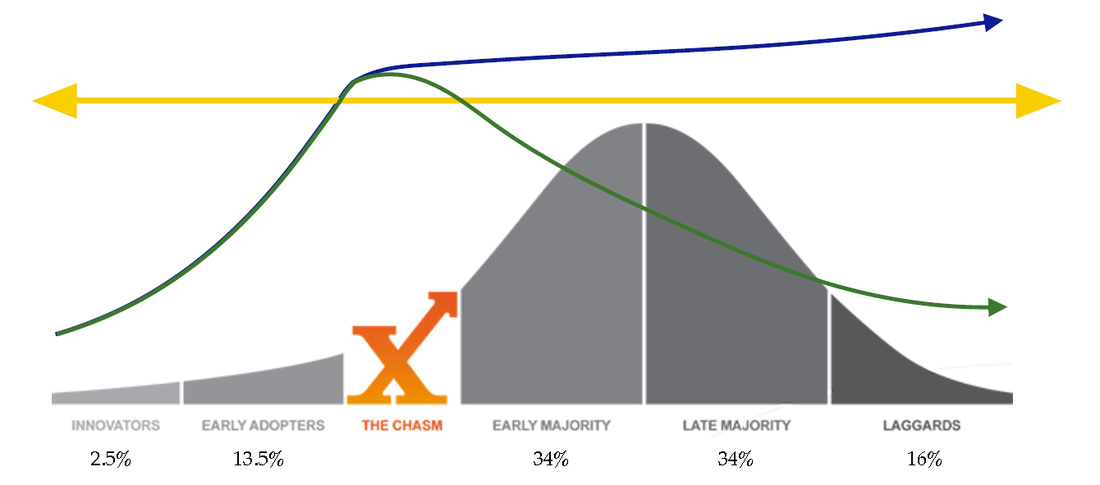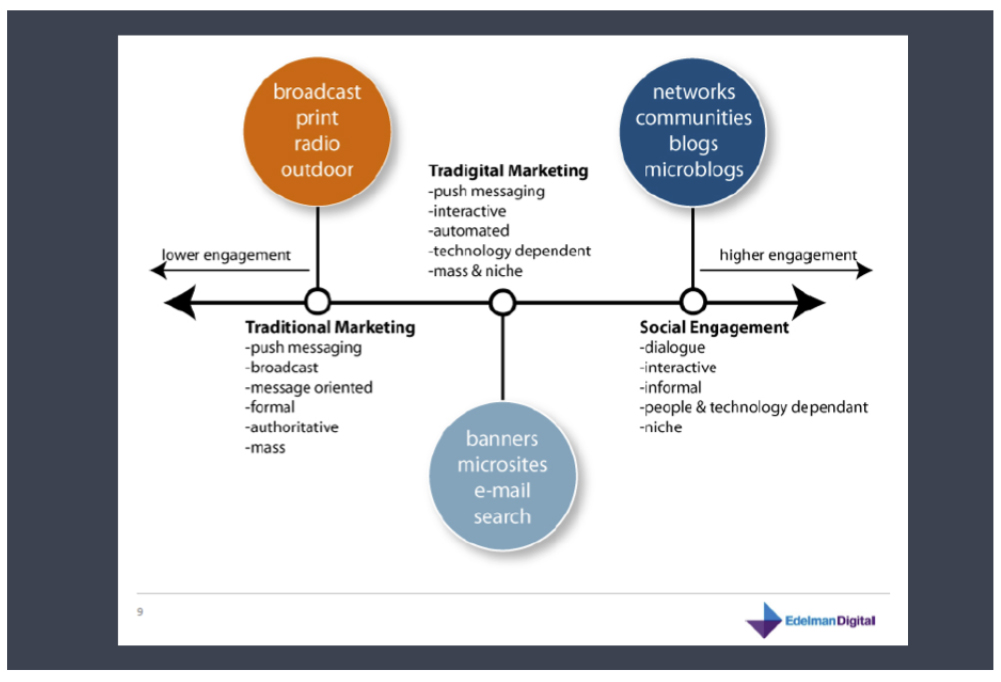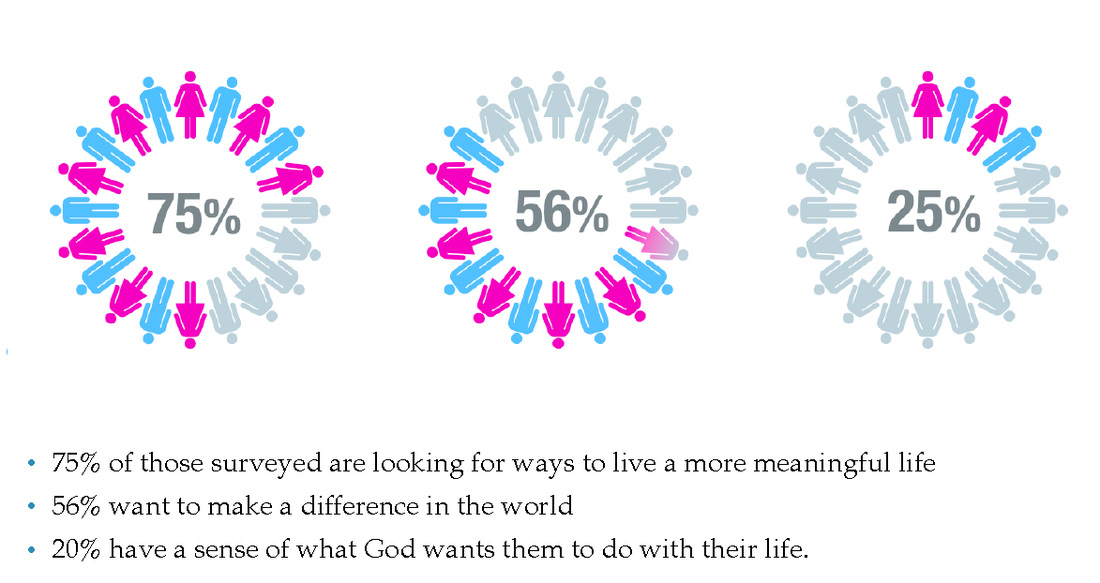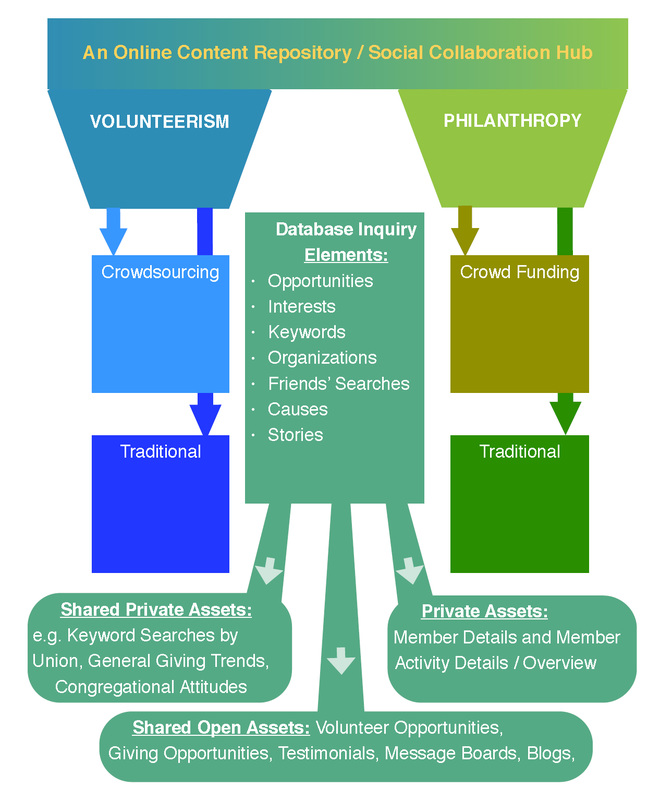Paul Hopkins Director of Social Media + Big Data, North American Division Membership Engagement, Revenue and Big Data Warehousing Uncertain Future? The Seventh-day Adventist Church of North America has an opportunity to grow with its membership. The suggestions offered within these pages are not an end-all to many of the issues and struggles we face as a church, but do cover three very important components that must be addressed going forward and that tie into an online database solution.!
discretionary income within the Church. This same group is gradually becoming overwhelmed by the sheer number of vehicles used by church ministries and institutions to convey needs. At the same time, a growing number of Adventist youths see the Church as increasingly irrelevant in their day-to-day lives. The top-down mandate/management model is out of touch with how Gen-Xers and Millennials relate to the world. Both of these groups want a strong Church but need a voice in determining how they will help and in what manner. As desperately as members want to connect with the institution, the Church continues to look for ways to connect with its membership, raise money, and understand the habits and interests of the greater body. We think that we know what our members want, but do we? And if not, what hope is there for sustainability? I’m suggesting that the Church build a single web portal that focuses on volunteerism and philanthropy, an online content repository and social collaboration hub that offers choices to individuals, additional funding to organizations, and answers to the Church about who our members are and what they care about. This would all take place within a community that many of them already inhabit: the Internet.! Engage your members with great opportunities, and they’ll often donate and/or volunteer. Process those actions in a controlled environment, and you will better understand the member’s needs. Know the needs, and you will understand how to engage members better. ENGAGING OUR MEMBERS: The Diffusion Model and the Technology Cycle Sociologists describe the way a catchy idea becomes popular as “diffusion,” a theory that Everett Rogers popularized in the 1962 book Diffusion of Innovations. The earliest research was used to track purchase patterns of Iowa hybrid corn growers, and then was expanded upon by Rogers to describe how new technologies and innovations can catch on. If one accepts the notions that technology is permanent and that the interconnectivity of people’s communication, ideas, and collaboration will continue to cycle through social media and electronic applications, then a huge problem presents itself to the North American Division. Rogers splits his bell curve into five groupings: Technology Innovators, who like technology just because it’s tech; Early Adopters (Visionaries), who are enamored with what technology could be; Early Majority (Pragmatists), who need the technology to be stable, reliable, and supported before embracing it; Late Majority (Conservatives), who prefer traditional methods and only dabble with technology; and Laggards (Skeptics), who may never embrace it at all. Adaptations of the model vary, but Geoffrey Moore’s book Crossing the Chasm adds a gap between the first two groups and the last three and focuses on the life cycle of technology adoption. The Chasm is the period between the time when an idea crosses the confusion threshold and the time when the number of variations drops to the point that people care to grasp what it means or can filter through the options. The Green Line follows the technology cycle. An idea appears, and boundaries of the definition of that idea aren’t known. Many interpretations of that idea appear, time passes, the idea is explored, and fewer variations are left. From that point, the number of things that define a concept is reduced. This can happen over a number of years or in a relatively short span (with technology). Examples include: (a.) A lack of options and marketplace interest ushered in the development of consumer-level analog recording devices, many of which are now forgotten (green line ascends and then levels off). Consumers eventually narrowed down their choices to Betamax and VHS (line descends). Betamax had higher quality but shorter recordings, while VHS quality wasn’t as high but offered double the recording time. Eventually VHS prevailed as the standard (line levels). The Early Majority began adopting it, but much later in the game. (b.) A similar thing happened with high-definition players. Variations became available (green line ascends and then levels off) but eventually came down to Blu-ray and HD-DVD (line descends). The technology was almost identical, but larger offerings from film studios released for Blu-ray made this the clear winner for consumers (line levels). You can gather from the graph and the examples that the Yellow Line represents the point where the number of variations to an idea becomes too great to communicate an idea to an uninitiated audience. In other words, everyone to the right of the chasm becomes overwhelmed and waits for a clearer choice or winner. The Blue Line represents social and electronic media applications. This is a problem for us because the number of applications and variations of social media and electronic applications is only increasing. There is no foreseeable plateau and then dip, so the Early Majority, Late Majority, and Laggards of this generation may never adopt the technology. Let’s return to the demographic and psychological profiles that the North Central Rural Sociology Committee created for its Study of Diffusion of Farm Practices. The report summarized the categories as:
Do you see a correlation? Christians are a more conservative group than the average citizen. Seventh-day Adventists are more conservative than the average Christian. As a conservative body, many that ascend to leadership positions tend to share characteristics with those to the right of the chasm and are less willing to accept new ideas. And while waiting for a clear winner in the VHS/Beta war hurts no one but the consumer, waiting for standards in social media and other electronic applications to work themselves out could put us too far behind ever to recover. Our Church has done an outstanding job of utilizing traditional marketing tools, but this is reflected again in the top-down communication approach. It’s time that we furthered our efforts and directed greater resources within higher engagement areas we’ll discuss later in this document. INITIATIVES THAT MATTER: Volunteerism: Many organizations outside our Church have brought philanthropy (annual fund programs, major gifts, capital campaigns) and volunteerism under a single department. Volunteerism is but one strategy of connecting with the community and is leaned on heavily, especially by underfunded and understaffed charities. The Seventh-day Adventist Church believes that volunteerism is a central part of our mission and worthy of its own departmental directive. Volunteerism and philanthropy strive to foster change and improve circumstances but do so in very different ways. Both have a place in the same conversation. A shared central hub would serve both interest groups, as there is an enormous amount of crossover and relevance to philanthropy when looking at volunteers. ! Think about this: Utah had the highest volunteerism rate of any state in the United States. An impressive 33% of Salt Lake City residents volunteered last year, ranking them fifth out of the defined 381 metropolitan statistical areas (MSAs) for the United States. Provo, Utah, had the highest percentage of its population—over 60%—volunteer out of all cities with populations between 500,000 and 1 million people. Provo is also home to the LDS Church’s largest Missionary Training Center. The LDS Church has created a strong culture of volunteerism within the states and cities where it has large population bases or a strong presence. The average Mormon commits nine times as many hours per month (nearly thirty-six hours) to volunteer activities as other Americans do. The LDS Church’s strength in active volunteerism is successful because it is a central Church tenant. The Church also recognizes that the primary barrier to volunteerism is not time, language gaps, childcare responsibilities, financial obligations, lack of transportation, misconceptions about volunteering, fear, or apprehension. The greatest factor is accessibility, so they’ve established a well-organized system that provides abundant volunteering opportunities within an easily accessible framework. Volunteerism isn’t just service for the community; it represents real cash value. In 1995, the Church’s human resources department estimated that the 96,484 volunteers serving at the time contributed services having an annual value of $360 million. This data did not include those serving as full-time LDS missionaries. Volunteering has trended upwards for all teenagers in North America (16-19) over the past six years and for Gen-Xers (1965-1981) for the last eleven years. Older adults (over 65) volunteer at a rate of over 80%. An average of 26.5% of Americans sixteen and older volunteered in 2012. Volunteers are almost twice as likely to donate to a charity as nonvolunteers. When volunteerism percentages are higher in cities, so are other important factors. We see evidence of this when looking at the fifty-one largest MSAs, and it is almost uniformly true as you go from the top to the bottom. Note three cities that cover the spectrum: It is hard to say if volunteerism increases giving, or if giving increases volunteerism. In this chicken-or-egg conundrum, the only thing that we do know is that they seem to go hand in hand. Communities of people feed off of the giving and volunteerism that occur around them, and are transformed. Communities of believers who share a central focus on giving and volunteerism stand to benefit even more than the general population when opportunities are available and accessible. The Seventh-day Adventist Church needs an additional vehicle by which members can collaborate, give, volunteer, and explore. We are not so different from our Mormon brethren. A central repository that allows donors and volunteers to shift focus easily and alternate between the voluntary and fundraising functions of a new website in the fewest number of steps is critical to keeping people engaged and remaining within the portal/database for a longer period of time. Volunteers tend to give, and givers tend to volunteer. By offering a central location for believers to explore both areas, we increase the activity of both groups (and often the same people). We are also providing a service for our members to connect with each other and deeply experience how they can partner with others, including the Church. Philanthropy: The Seventh-day Adventist Church is years behind where it needs to be in terms of philanthropy. My colleagues and I have witnessed academies hire fundraisers and expect a huge philanthropic upswing within a year, or insist that a needs-based dollar amount be met. When that doesn’t happen, as is most often the case, the fundraiser is often fired. Other boarding schools commit to maintaining the fundraiser long enough to realize bottom-line improvement. But then some of these schools still eventually fire their fundraisers, shortsightedly wanting to use the fundraiser’s salary for other needs. They assume the same donors will keep giving to what they believe in when the fundraiser was there. Another group of academy administrators keeps its fundraiser but expects these individuals to raise all of the funds. In each of these situations, it is important to remember that relationships take time, and donors—especially major gift donors—prefer to work with leadership to turn a vision into a reality. They’re giving to that vision, to that relationship, not because an organization needs a new building but because that building will welcome and train students to bring others to Christ. Organized philanthropy in our Church is relatively new when compared to the systematic generosity of the Andrew Carnegies and Henry Dunants of the world. Our intentions, although good, are often misguided from a lack of experience. Academies in some ways reflecting the “pass the offering plate” culture of the church. We fail to understand that to capitalize on the partnerships we could be forming, we must do so in ways that are meaningful to donors. That is not to say that Adventist institutions don’t benefit from generosity. The Seventh-day Adventist Church received $3.2 billion dollars in tithes and offerings last year. We have 17.5 million current members around the world, and 1.1 million of those reside in North America. Healthcare Giving in the North American Division Health System is represented by 62 institutions that reported receiving $725,501,674 last year. That is staggering, but… The Hartford Institute for Religion Research released a report in 2011 titled, “A Decade of Change in American Congregations.” In total, 11,077 Christian, Muslim, and Jewish congregations (120 denominations) were included in the research. The study, which was written by David A. Roozen, looked at the years from 2000 until 2010. Several things from that report are striking, including the following:
Seventh-day Adventists in North America should be worried if we continue on this path. There is a noticeable drop in attendance in many of our congregations, especially among young adults. Tithe has flattened and will drop in the coming years. And from the Division office to lower branches, we have not made a concentrated effort to be innovative technology enthusiasts. There are pockets of success but not enough to stop the slide. Tithing is not a sustainable way to fund the church going forward. A general survey of our nation’s young adults found that Millennials are more trusting of institutions––except churches––than older generations are: Elders (41%), Baby Boomers (41%), Gen-X (34%), and Millennials (30%). We did not start losing church connectedness through giving and volunteerism with Millennials; the phenomenon began with Gen-X. One of the more disturbing repercussions of this shift is that the future tithing crisis is likely to affect the church a full generation earlier than most may have anticipated. This is not to say that we should not ask for tithes. Tithing is a very important part of the worship experience established by God, and it may be possible to bring some of those AWOL tithers back to us. However, unless we can connect with our membership needs, members will define what tithe means to them and where those and other philanthropic dollars go. Penelope Burk, the president of Cygnus Applied Research, an international consulting company on fundraising, said it best: “Religion has a huge impact on turning people toward philanthropy and keeping them pointed in that direction. Who or what is waiting in the wings to pick up the slack?” The Barna Group, a leading research organization that focuses on the intersection of faith and culture, highlights a renewed urgency for spiritual substance—not in the worship style, dress code, or programs but rather in the substance of what it means to participate in church. This means that members’ involvement with the church beyond the mortar and brick is as important, or more so, to the connection they have with the body as passive pew immersion with which old-line protestant congregations have sometimes been associated. Barna also mentions three points in its findings about people and purpose: For years, I’ve driven by the Johns Hopkins Applied Physics Laboratory on my way to work and marveled. Hopkins has one of the premier university systems in the world. What sets Hopkins apart, though, is its research. No university system has received more research and development (R & D) funding from the federal level, and the difference in funding is staggering. Hopkins received $1.88 billion dollars total grant money from the US government. The next highest grant payout was to the University of Washington at $949 million, and then the University of Michigan at $820 million. Johns Hopkins is required to use only 12% of its own money for research. The next nine highest grant payout universities funneled an average of 40% of their own money into research. The government sees value and rewards the university because Hopkins delivers. Through its work, Hopkins essentially says, “Continue providing grants…and we’ll reward you with innovation. We’ll alter lives. We’ll do things that nobody else can. We're that committed.” This belief and commitment to the institution isn’t limited to government funding. The fundraising this university does is uncommon. Johns Hopkins University is in the midst of a $4.5 billion dollar campaign. Roughly six months into the campaign, Hopkins was halfway to its goal, with $2.25 billion from 162,000 donors in the form of gifts and pledges. In addition, 262 of the donors have made campaign commitments of $1 million or more, and 28 of those have given $10 million or more. And that’s without factoring in the endowments that finance a portion of capital campaign requirements for the university system. Hopkins continues to ask for funds from full-time, part-time, and research employees at the university (numbering 6,092 individuals) and tracks and solicits from the 163,705 current alumni of its nine schools. And when asked, all of these groups give higher-than-average percentages of their time and money. Hopkins is almost an apples-and-oranges comparison for many reasons. But it’s a benchmark. It does everything right in reaching donors, has done it for over 100 years, and is changing with the times to reach more donors electronically. Want to know what a university student thinks when he or she leaves Hopkins? How about this: 65% of the graduates believe that their jobs make the world a better place. That probably doesn’t surprise you. But this might: 63% of Andrews University graduates feel the same way. Only two of the top 100 universities mentioned in the 2012–13 PayScale College Salary Report were above Hopkins, and only four colleges/universities in the top 100 surpassed Andrews in their percentage of graduates that felt their jobs made the world a better place. I’d like to believe that Andrews is a barometer for the values of the broader Church and that all of those numbers would be reflected in our other schools if the data were available. Hopkins graduates believe they will make the world better through science. They are the standard for bringing students in and then putting them out into the world to cure disease, explore space, and create quantum algorithms to predict market shifts. Seventh-day Adventists also believe we can make a difference by bringing in students and then putting them out into the world to excel in many of these same fields. The difference is that we also have a sense that God wants us to do more with our lives. We are called to serve, give back our time and our money to causes we believe in, and partner with institutions of vision within the church that know how to accomplish things, but we lack resources. We need this kind of structure, and we need it now. The Online Portal: The North American Division (NAD) would maintain control of the Online Content Repository / Social Collaboration Hub (OCRSCH) to ensure security of the data files and privacy of the participating institutions and individuals.
In its simplest form, the OCRSCH is a hub where individuals can volunteer time, services, and philanthropic support to organizations or people who work to help Seventh-day Adventist initiatives. Organizations can post volunteer opportunities and receive financial support from individuals or groups. All organizations defined as NAD entities (churches, conference- and union-owned educational institutions, ministries, ACS, etc.) would have automatic membership access to this database. Before going active, the institutions would need to provide certain basic information that the NAD would define. Other Seventh-day Adventist organizations would be given the chance to join this network if they’ve met the participation requirements of (Adventist-laymen's Services & Industries, Maranatha, etc.). And a final group might include young adults who are raising funds for objectives such as mission projects. Individuals and organizations will register one time, creating a password and username of their own choosing. At the time of registration, the individual will be given the option to provide credit card information or bank routing information. Individuals will also be asked about volunteer opportunities they are interested in. Individuals who register may provide a personal address and/ or church information. The system will automatically add the union and conference to which they pertain. Organizations and groups can make a case for a worthy need or post volunteer opportunities on their boards by using drop-down options. They can also define their needs through categorization, which becomes a searchable parameter. The more clearly an organization can define the need or an individual can address a skill set, the easier it will be for both groups to locate one another. The possibilities are endless when multiple search areas are made available. Search fields may include the following:
This type of opportunity within the portal is designed to allow people the freedom to peruse and choose which projects they want to contribute to and volunteer for. It builds collaboration by allowing us to see what others are giving, too. And it aims to do so in the fewest number of actions necessary while still providing a deeper, more immersive experience. Also, institutions can directly gauge their standing among donors and people who have volunteered at their ministry. The portal experience is social. It’s empowering. It provides instant feedback. And it provides valuable dollars and volunteer hours. While all of this is happening on the surface, data warehousing is occurring in the background, and the division is able to benefit greatly by mining down into activities. The backend database is separated into three areas:
What will our church look like in five years, or in 10? Can we say that we’ve done everything possible to empower our members to give and volunteer? Have we given them an opportunity to finish the work by enabling them to choose the causes to which they contribute? Donors and volunteers do not belong to churches, conferences, unions, or divisions, but we sometimes treat them as though they do. In this scenario, some organizations and stewards will be rewarded by a community of believers for their good work. Others will learn more about themselves and how they can improve. And some instances, organizations that are just getting by because of name recognition…will need to be accountable to it’s base. I love my church, and I want everyone to see the many wonderful, extensive issues they can be part of. I believe that philanthropic and volunteer involvement is key to funding future initiatives and that providing opportunities is the only way to realize that dream. What will the church look like in five years? It all depends. We’ll see. Comments are closed.
|
Archives
August 2020
Categories
All
|
- Home
- BLOG
-
RESOURCES
-
RESOURCE MENU
>
- ADVENTIST IDENTITY GUIDELINES
- BIG DATA RESOURCES
- BRANDING, IMAGE & DESIGN RESOURCES
- CHURCH/MINISTRY SPECIFIC RESOURCES
- COPYRIGHT & TRADEMARK BASICS
- COURSES
- EMAIL RESOURCES
- GUIDANCE FOR HIRING SOCIAL MEDIA POSITIONS
- PODCASTS
- REPORTS & CASE STUDIES
- SOCIAL MEDIA RESOURCES
- (SOCIAL) VIDEO RESOURCES >
- TEXTING 4 CHURCHES
- TRACKING & ANALTYICS
- WATCH VIDEOS & TUTORIALS
- WEBSITE TIPS
- SOCIAL MEDIA GUIDELINES
-
RESOURCE MENU
>
- SEO
- Digital Discipleship & Evangelism
- COVID-19 RESOURCES
- eNEWSLETTER








 RSS Feed
RSS Feed